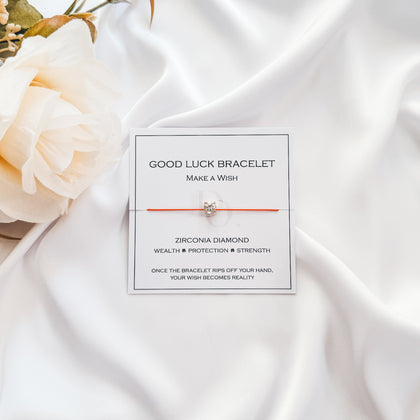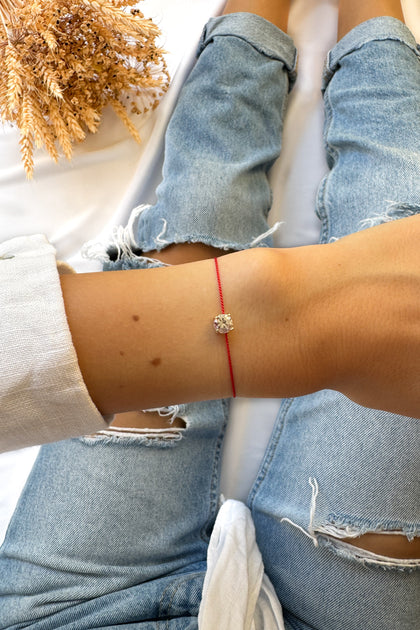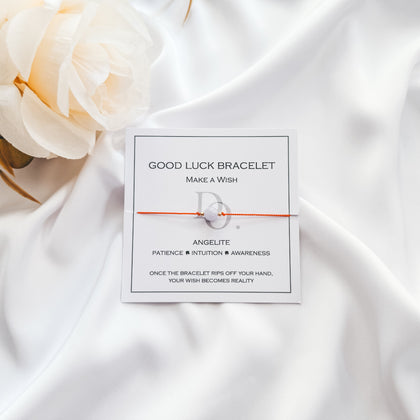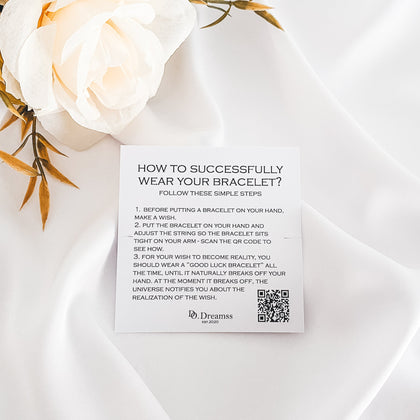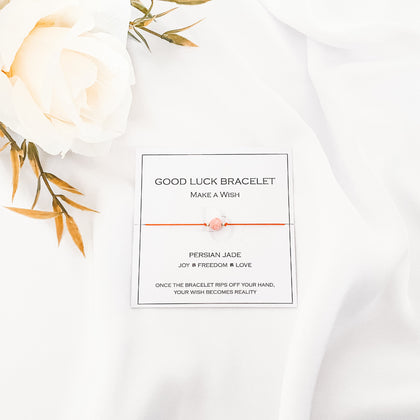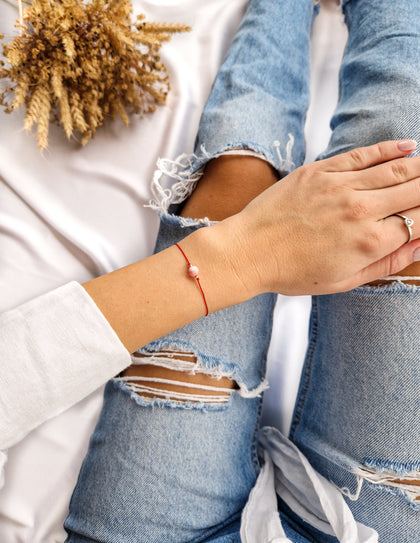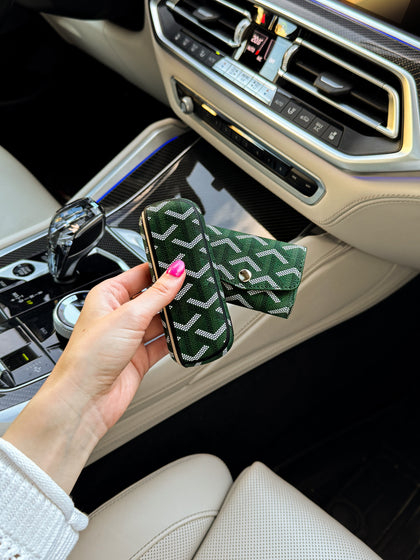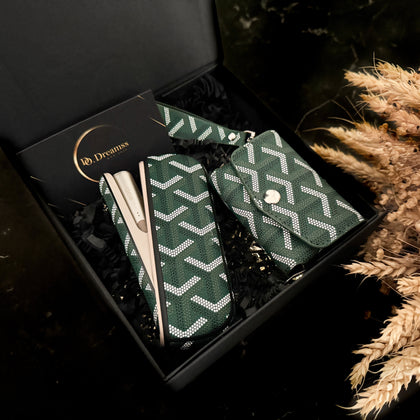The Lucky Edit by Do.Dreamss
Can Jewelry Bring Success? Exploring the Power of Lucky Accessories
Throughout human history, adornments have served as more than mere decorations—they've been symbols of status, protection, and intention. The concept of "lucky jewelry as a tool for success" isn't new, yet it continues to captivate our modern sensibilities. From ancient Egyptian amulets to contemporary affirmation bracelets, these meaningful accessories have long been intertwined with our desires for achievement, protection, and prosperity.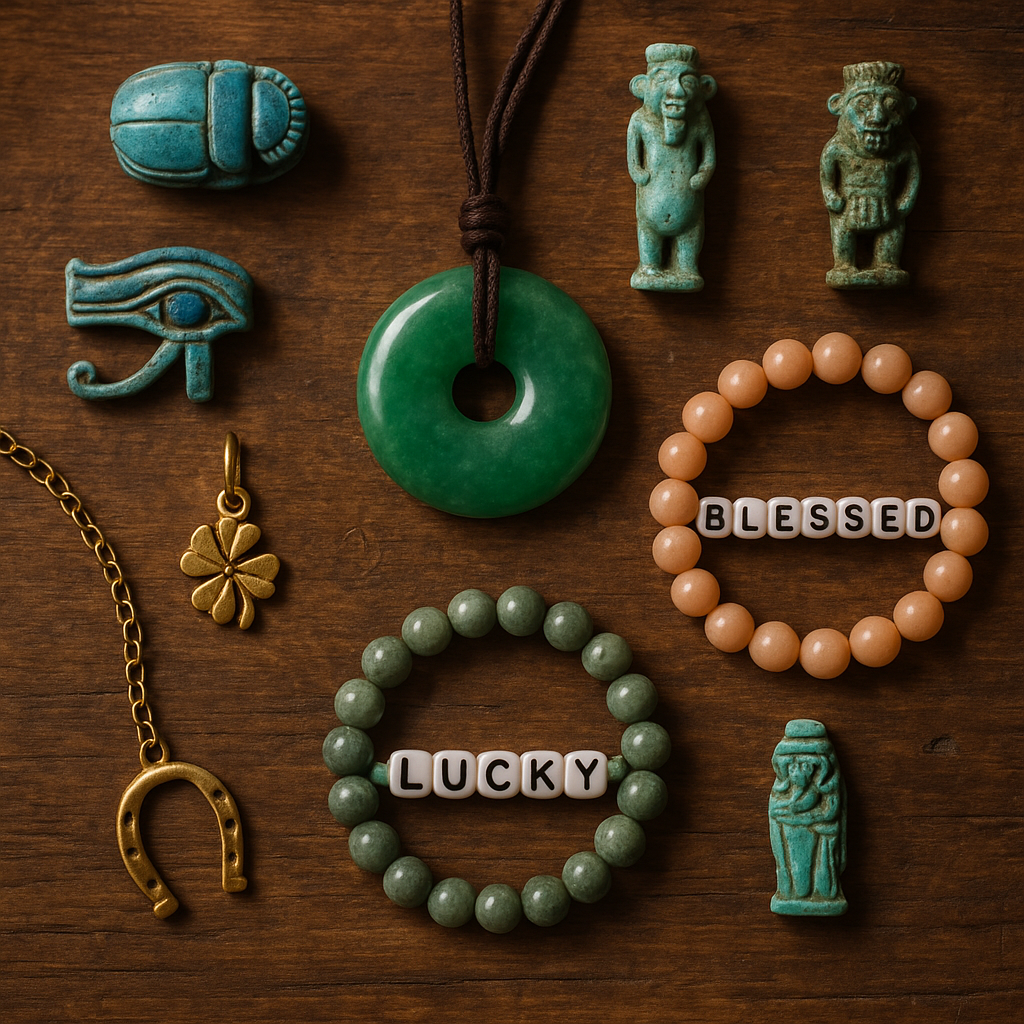
This connection between accessories and fortune isn't simply about superstition. In many cases, wearing symbolic pieces serves as a physical reminder of our goals, a confidence booster during challenging moments, or a tangible representation of our personal journey. Whether you're drawn to gemstones believed to attract abundance or symbols that represent protection during new ventures, these items often become powerful psychological anchors in our quest for success.
In today's achievement-oriented world, many professionals, entrepreneurs, and creative individuals incorporate meaningful accessories into their daily lives, not necessarily because they believe in magical properties, but because these objects help maintain focus, cultivate mindfulness, and reinforce personal intentions. Throughout this exploration, we'll uncover how various cultures interpret lucky accessories, which materials are traditionally associated with prosperity, and how you might thoughtfully incorporate these meaningful items into your own life. You'll discover both the rich historical context and practical modern applications of accessories that might enhance your path to success.
The symbolic significance of jewelry in success and status
Accessories have long been visual shorthand for achievement and influence across civilizations. In ancient Egypt, gold collars indicated royal favor, while jade pendants in Chinese imperial courts represented virtue and excellence. These adornments weren't simply decorative—they functioned as powerful social signifiers that communicated one's position, accomplishments, and even moral character.
The meaning assigned to these pieces emerges through multiple channels: cultural tradition, family significance, and personal intention. A particular stone might traditionally symbolize protection in one culture while representing intellectual clarity in another. Similarly, inherited pieces often carry emotional significance beyond their material value—grandparents' wedding bands or parent's watches become talismans that connect us to our ancestry and the qualities we admire in them.
Interestingly, the power of emblematic accessories isn't necessarily tied to monetary worth. While luxury brands certainly capitalize on status association, many deeply meaningful items derive their significance from personal connection rather than price tag. A modest pendant chosen during a pivotal life moment might carry more psychological impact than an expensive but impersonal piece. This distinction between external status and internal meaning forms the core of why certain items become personally significant.
Archaeological findings support this human tendency to imbue objects with meaning. Excavations from virtually every ancient civilization reveal carefully crafted accessories buried with individuals, suggesting these items were considered important enough to accompany them beyond physical life. Anthropologists note that these weren't always the most valuable possessions materially, but rather items believed to serve functional purposes in spiritual realms—protection, guidance, or representation of identity.
Jewelry as modern affirmation and self-confidence tool
Today's motivational accessories serve as physical manifestations of our aspirations and capabilities. When we face challenging situations—an important presentation, difficult conversation, or new venture—these items can function as tangible anchors to our intentions.
The wedding ring that reminds us of supportive partnership, the medallion representing personal strength, or the bracelet commemorating overcoming adversity—each becomes a touchpoint for confidence when we need it most.
Psychologists have noted this phenomenon as a form of "embodied cognition," where physical objects influence our mental states. By wearing items we've mentally associated with positive qualities or outcomes, we create subtle but meaningful reminders that can influence our thinking patterns throughout the day. This explains why many successful individuals develop personal rituals around specific accessories for important occasions.
Modern interpretations have expanded this concept into dedicated categories of empowerment jewelry. Items inscribed with affirmations, coordinates of significant locations, or personal mantras have become increasingly popular. These pieces function as discreet but powerful reminders of personal commitments and capabilities, particularly during moments of doubt. Collections featuring prosperity elements incorporate traditional symbols with contemporary designs, making ancient wisdom accessible for modern wearers seeking both style and meaning.
Gemstones and symbols attributed to success and good fortune
Different materials have gained reputations for enhancing various aspects of prosperity throughout history. Certain gemstones, metals, and symbols appear consistently across cultures as harbingers of abundance and achievement. Understanding these traditional associations provides insight into why particular materials continue to be popular choices for those seeking motivational accessories.
Tiger's Eye, with its golden-brown bands and distinctive shimmer, has long been associated with clarity and decisive action—qualities essential for successful endeavors. Business professionals often select this stone for its reported ability to enhance focus and practical thinking. Citrine, sometimes called the "merchant's stone," carries a sunny disposition believed to attract wealth and dispel negative energy that might otherwise block opportunities. Its warm yellow hues visually evoke optimism and abundance.
Beyond individual stones, certain symbols transcend cultural boundaries in their association with prosperity. Eastern traditions feature the PiXiu, a mythical beast believed to attract wealth while protecting existing assets. Similarly, designs incorporating coins, particularly those arranged in auspicious numbers or patterns, represent continuous financial flow. Five emperor coins tied with red string appear in numerous Feng Shui recommendations for prosperity enhancement.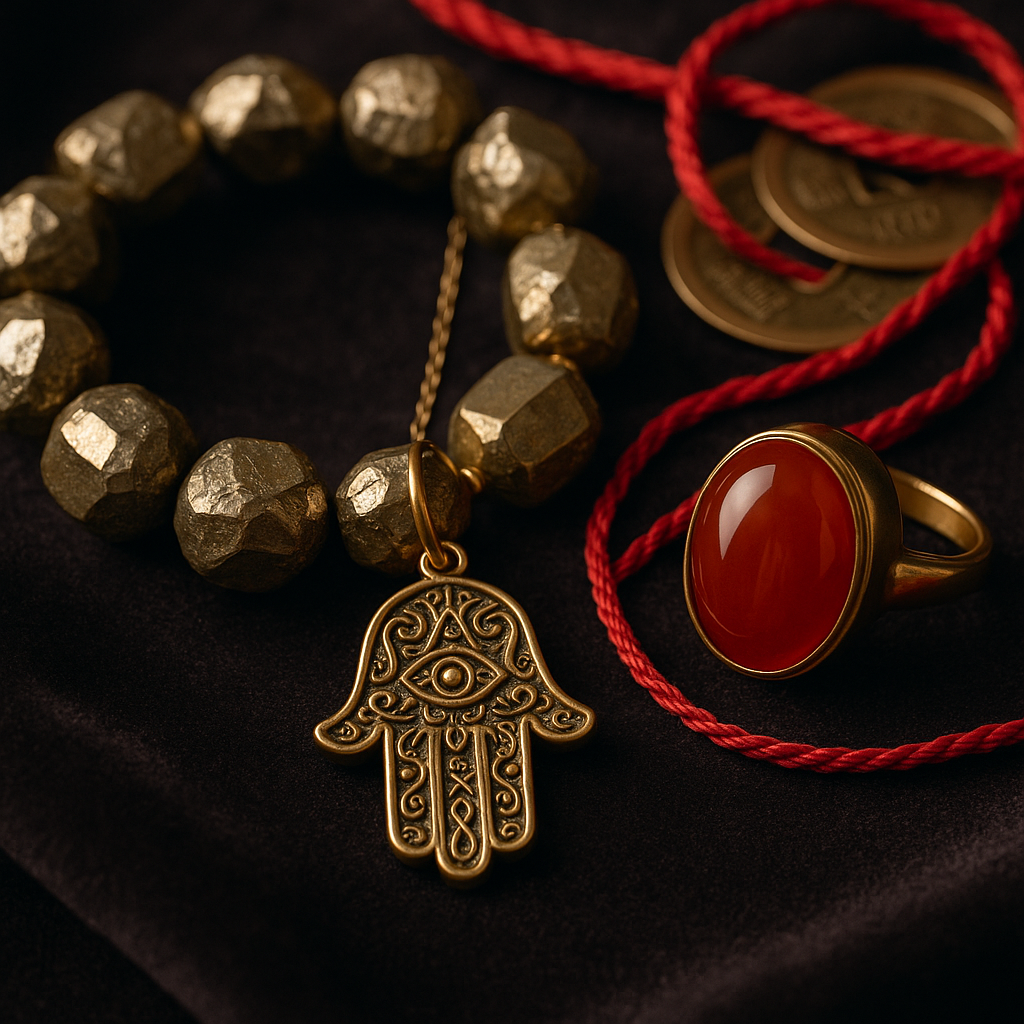
These traditions blend aesthetic appeal with deeper cultural significance. Jade, highly valued in East Asian cultures for millennia, represents virtue, protection, and harmony—qualities believed to create conditions where prosperity naturally follows. Red Agate stones feature prominently in Middle Eastern protective pieces, thought to deflect negative influences that might derail success. While Western traditions might emphasize different materials, concepts like protection, clarity, and attraction remain consistent across cultural variations.
It's worth noting that while historical and anecdotal evidence supports the psychological benefits of these meaningful objects, their effects are primarily understood through cultural and personal frameworks rather than scientific measurement. The value lies in how these traditions provide structured ways to maintain focus on goals and embody desired qualities. Creating impactful looks with these materials allows wearers to connect with traditions while expressing personal style.
Examples of jewelry pieces associated with success
Practical manifestations of prosperity accessories appear in various forms suitable for different personalities and professional contexts. Bracelets featuring traditional abundance stones like pyrite (also called "fool's gold" despite its genuine reputation for attracting wealth) allow for subtle daily reminders while remaining appropriate for professional environments. These pieces often incorporate mixed materials—combining symbolic stones with metals chosen for durability and aesthetic appeal.
Pendants offer another versatile option, particularly when designed around protective or inspirational symbols. Hamsa designs (the stylized hand believed to ward off negative energy) appear across cultures and can be rendered in styles ranging from minimalist to ornate. Similarly, compass motifs serve as metaphorical reminders of maintaining direction toward personal goals, while key pendants symbolize unlocking potential and opportunities.
For significant milestones, more substantial pieces often mark the occasion. Watches gifted for career achievements become daily reminders of capability and progress. Signet rings, whether featuring family crests, personal symbols, or achievement markers, create tangible connections to identity and accomplishment. These items gain significance both from their inherent symbolism and from the context of their acquisition—becoming physical embodiments of important life transitions.
Cufflinks and tie accessories provide particularly relevant options in professional settings, allowing subtle incorporation of meaningful symbols in business attire. Eagle motifs represent vision and achievement, while designs featuring labradorite (associated with transformation and manifestation) add distinctive visual appeal with deeper significance for the wearer. These pieces often become signature elements of professional identity, consistent elements in an otherwise changing wardrobe.
How to choose and use lucky jewelry for achievement
Selecting meaningful accessories involves balancing several considerations beyond mere aesthetic appeal. While visual attraction certainly matters—you'll likely wear items more consistently if they complement your style—deeper resonance comes from alignment with personal values and aspirations. Consider what qualities you're currently developing or what specific goals you're pursuing. This reflection helps narrow options to pieces that serve as genuine reminders rather than arbitrary decorations.
Material selection offers another important consideration. Beyond traditional associations, practical factors like durability and maintenance requirements affect how consistently you'll wear and engage with your chosen piece. Someone with an active lifestyle might prefer sturdier materials that withstand daily wear, while others might prioritize visual distinctiveness for occasional wear during significant events.
Many traditions suggest "activating" intentional accessories through personal rituals. While these practices vary widely across cultures, the underlying principle remains consistent: creating conscious connection between the physical object and its intended purpose. Simple approaches include holding the item while visualizing specific goals, cleansing new pieces with preferred methods (sunlight, moonlight, sound, or gentle cleaning), or writing intentions to keep with the item's storage.
Perhaps most importantly, authenticity should guide selection. Rather than accumulating numerous pieces based solely on reported properties, focus on items that genuinely resonate with your personal narrative. A simple piece with personal significance often carries more psychological impact than an elaborate item chosen primarily for traditional associations. This authenticity ensures the object serves as a meaningful touchpoint rather than an external superstition.
Everyday ways to incorporate success jewelry into your routine
Integrating meaningful accessories into daily life creates regular opportunities for reconnection with intentions. For professional settings, consider subtle pieces that complement standard attire while providing personal reminders—slim bracelets that remain visible during computer work, pendants that rest at appropriate lengths with business necklines, or rings positioned for occasional glances during the workday.
Strategic wearing during particularly significant events creates additional impact. Many people select specific pieces for presentations, negotiations, interviews, or other high-stakes situations. This intentional selection transforms routine accessorizing into a form of preparation, a physical component of getting mentally ready for important moments. Over time, these associations strengthen, with the items becoming reliable confidence triggers.
Layering provides another approach for incorporating multiple meaningful elements without overwhelming your appearance. Combining different chain lengths allows wearing several pendants simultaneously, while stacking bracelets or rings with complementary designs creates cohesive looks with multiple symbolic elements. This approach works particularly well when different pieces represent various aspects of your goals or different sources of personal strength.
Consider also how these items integrate with other personal practices. Some individuals coordinate meaningful accessories with journaling, meditation, or affirmation practices—touching specific items while reviewing goals or repeating intentions. Others create morning rituals around selecting daily pieces as a moment of intention-setting for the coming hours.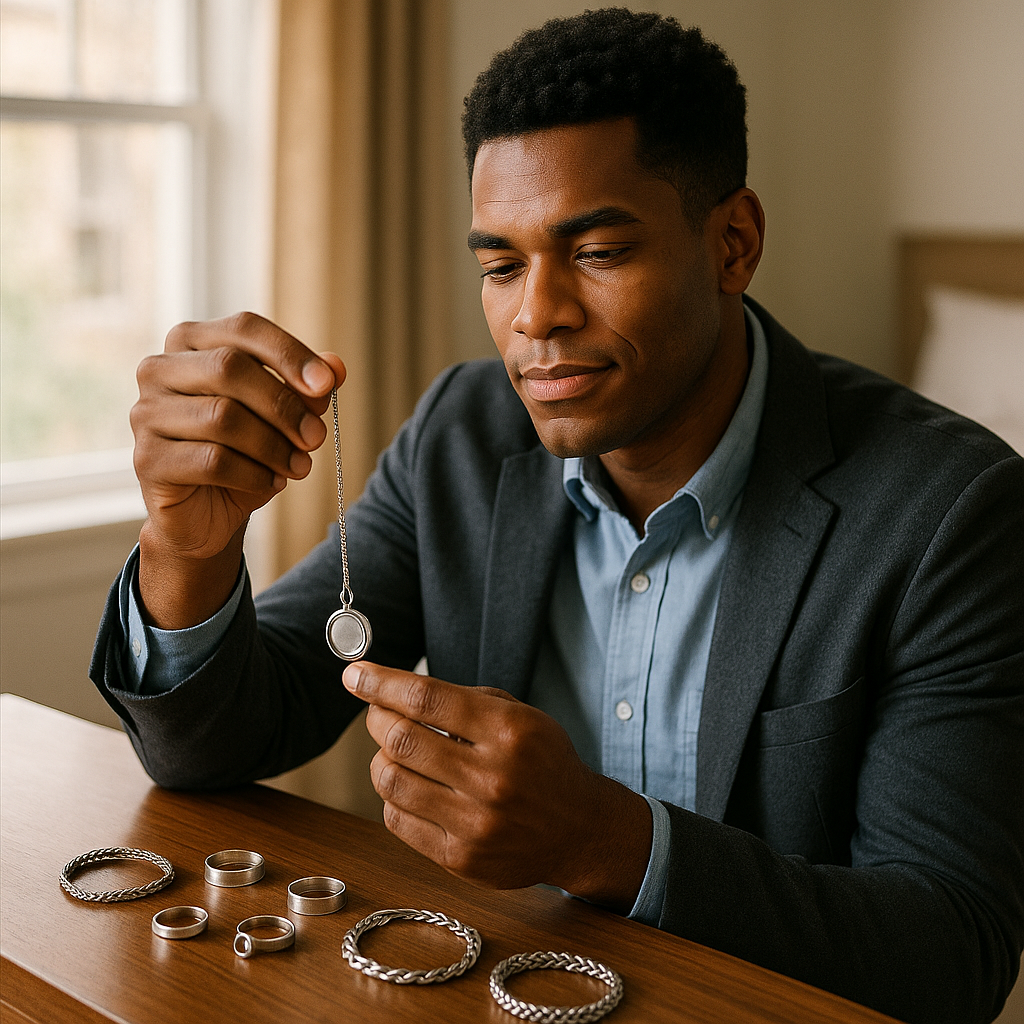
These integrations enhance both the accessory's impact and the consistency of complementary practices. Embracing luck and protection through these thoughtful practices transforms ordinary accessories into powerful personal tools.
Making the most of your success jewelry: care, mindset, and gifting
Maintaining both the physical condition and symbolic significance of meaningful accessories requires intentional care. Practical maintenance ensures appearance and durability—storing pieces separately to prevent scratching, cleaning according to material requirements, and addressing repairs promptly. These practices demonstrate respect for both the item and its purpose in your life, reinforcing its perceived value beyond mere decoration.
Beyond physical care, many traditions suggest periodic "renewal" of an item's symbolic properties. This might involve recharging gemstones through preferred methods, refreshing personal intentions through conscious reconnection, or marking anniversaries of significant events associated with the piece. These practices prevent accessories from becoming background objects, maintaining their psychological impact through continued conscious engagement.
Gifting meaningful pieces creates powerful connections with others during pivotal moments. When selecting items for someone entering a new chapter—graduation, career advancement, business launch—consider both their personal style and the qualities they might need to cultivate. Accompanying gifts with notes explaining symbolic significance adds depth to the exchange, transforming the accessory from mere object to meaningful talisman.
For personal collections, periodic review helps maintain relevance. As goals evolve and life circumstances change, different symbols might become more appropriate. This doesn't necessarily mean discarding previous pieces—many become markers of completed chapters or achieved milestones. Instead, thoughtful curation ensures your collection reflects current aspirations while honoring past journey segments.
Consider creating personalized meaning systems rather than relying exclusively on traditional associations. While established symbolism provides valuable starting points, personal significance often develops through experience—the necklace worn during a successful presentation, the bracelet that accompanied a major decision, the ring that marked a personal transformation. These individual associations often carry more psychological impact than generic traditional meanings. Luxury pieces with personal significance combine aesthetic quality with meaningful resonance, creating accessories worthy of becoming personal heirlooms.
As you incorporate meaningful accessories into your journey, remember that their ultimate power lies not in mystical properties but in the consciousness and intention they help you maintain. These physical symbols serve as bridges between abstract aspirations and concrete daily actions—tangible reminders of intangible values. By thoughtfully selecting, caring for, and engaging with these pieces, you transform simple adornments into powerful tools for focus, confidence, and personal growth.
Frequently asked questions (FAQ's)
Can wearing jewelry genuinely impact my success or mindset?
Jewelry acts as a personal symbol or reminder, serving psychological functions that can boost confidence, focus, or motivation, even if not scientifically proven to cause external results. These items work primarily through association and mindfulness, creating physical touchpoints for mental states that support achievement.
Which gemstones are considered lucky for wealth and achievement?
Common choices include Tiger's Eye, Citrine, Jade, Obsidian, Pyrite, and Red Agate—each has historic or cultural meaning tied to prosperity and protection. Tiger's Eye promotes clarity and decisive action, while Citrine attracts abundance and positive energy. Jade represents virtue and harmony, Obsidian offers protection, Pyrite attracts wealth, and Red Agate deflects negativity.
How do I choose jewelry that is meaningful for me?
Start with your personal goals or milestones, aligning materials or symbols that resonate with these intentions—authenticity and personal resonance matter most. Consider both traditional meanings and personal associations, selecting pieces that genuinely connect with your aspirations and values rather than following trends or accumulating numerous items.
Is it necessary to "cleanse" or set intentions with lucky jewelry?
Many people find value in affirming or "cleansing" pieces through rituals or mindful intention-setting, though it's a personal decision. These practices help create conscious connection between the physical object and its intended purpose, strengthening psychological association through deliberate attention rather than through inherent properties of the object itself.
Can I give luck jewelry as a gift for someone's new venture?
Yes, gifting jewelry with meaningful symbols or stones is a longstanding tradition to wish someone success in milestone moments. When selecting such gifts, consider both the recipient's personal style and the qualities they might need for their upcoming challenge. Including a note explaining the piece's significance adds depth to your gift.

